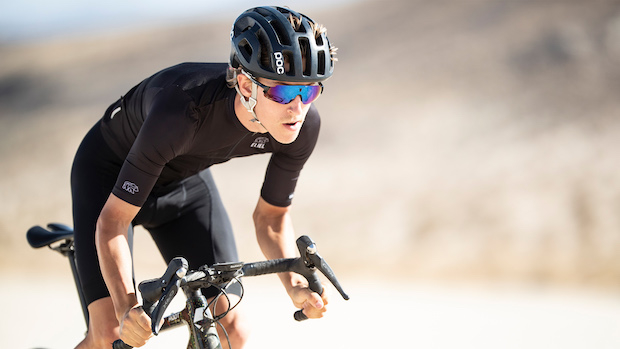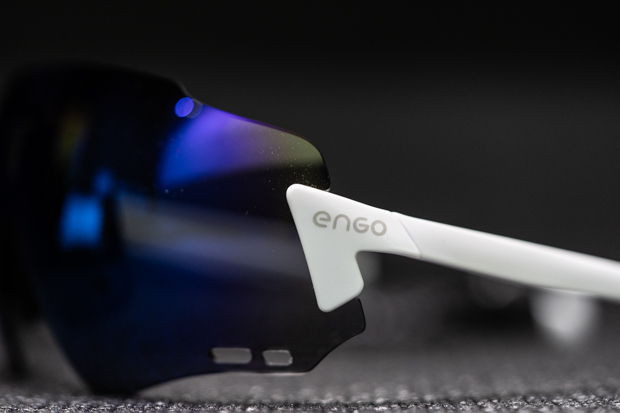How to Use Real-Time Data on Race Day

This article is the final installment in a four-part series, presented by ENGO. In this series, Matt Fitzgerald will teach you how to apply new advances in real-time training data for maximum benefit at various stages of athletic development. Learn more about ENGO here.
You work hard for your fitness. The last thing you want to do is waste it. But this is exactly what many athletes do in competition. As a result of flawed pacing, endurance racers seldom reach the finish line as quickly as they could. The gap between an athlete’s actual finish time and the time they could have achieved with better execution is—like it or not—a measure of fitness wasted.
Evidence that a majority of athletes pace suboptimally in races comes from a 2021 study by French researchers, who found that runners were able to complete a 3000-meter time trial as much as 14 percent faster when their pace was externally regulated in order to maintain a steady heart rate or oxygen consumption level than when their pace was freely chosen. The good news is that there is also plenty of evidence that athletes can improve their pacing skill with deliberate practice. Devices like ENGO that supply athletes with continuous real-time data can help in this process, which begins with understanding what it means to execute a race optimally.
What Perfect Pacing Looks Like
The defining characteristic of a well-paced race is consistency. Although it is nearly impossible to sustain a perfectly steady pace or power output throughout an entire race, research has shown that in any given race, less variation in work rate is associated with better performance. Here are a few quick examples:
A 2023 study led by Sabrina Demarie of the University of Rome found that elite 1500-meter swimmers paced themselves more evenly than junior swimmers, and that steadier pacing was associated with faster finish times at both levels.
A 2015 study published in the Journal of Science and Medicine in Sport reported that athletes who had less variation in heart rate in the uphill and downhill portions of an Ironman triathlon relative to their heart rate in the flat portions achieved faster bike splits than athletes’ whose heart rate was more up-and-down.
A 2011 study appearing in the International Journal of Sport Physiology and Performance found that the closer an individual athlete’s first-lap run pace was to their average pace for a four-lap run leg at the European Triathlon Championship, the faster their overall run time was.
As for why steady pacing yields the best results, it’s quite simple. The relationship between exercise intensity and effort sustainability is nonlinear, meaning each incremental increase in effort causes fatigue to accumulate faster than the previous increase. Hence, a steady effort is sustainable longer than a fluctuating effort even if the average is the same. ENGO makes steady pacing easier by giving athletes continuous visual access to relevant performance data.
Practicing Proper Pacing
Effective pacing isn’t quite as simple as picking a pace or power number and sticking to it. Not only do hills and winds necessitate some variation in output, but there’s no telling if the number you pick is truly the highest output you can sustain in a given race or race segment. Selecting a pace or power target based on the training you’ve done will give you a good starting point, but ultimately you have to feel your way to the right distribution of effort.
Deliberate practice is required to get better at pacing. With its continuous near-eye display of real-time performance data, ENGO has the potential to greatly accelerate the learning that occurs through deliberate practice. The most powerful way to take advantage of this technology is to periodically repeat particular courses and workouts, aiming to distribute your effort more efficiently each time. The goal is not just to go faster overall but to smooth out your effort distribution in ways that allow you to finish faster without simply pushing harder. Let’s look at a couple of examples:
Race-Pace Workout Sequence
Suppose you’re training for a half-iron-distance triathlon. A sensible training plan for this event will include some longer efforts at race intensity. Your race-pace running practice, for example, might consist of a sequence of three 8-mile efforts at half-marathon pace. If possible, do these workouts on a course similar to that of your upcoming event. In the first one, aim for an effort you feel you could sustain for 13.1 miles off the bike at your current level of fitness. Keying off your ENGO near-eye data display, try to maintain a very steady pace or power output on flat and windless segments, while allowing your effort to increase modestly when climbing or running into a headwind and minimizing the effort drop that naturally occurs when descending or running with the wind.
After completing the workout, analyze the data and look for ways to improve. Did you start out too fast and fade at the end? Did you coast too much when descending or push too hard when climbing? Repeat the workout two to four weeks later and see if you can complete the distance faster at the same level of effort by smoothing out your pacing and taking advantage of any fitness you’ve gained. Repeat this process for your third race-pace run in another two to four weeks.
Short Time Trials
Another effective way to practice race pacing is to perform periodic short time trials. The advantage of these is that, like actual races, they are all-out efforts. Their main disadvantage is that they are all-out efforts, hence hard on the body. I therefore recommend that athletes perform 20-minute time trials (or distance-based time trials that take roughly 20 minutes to complete), which aren’t terribly disruptive to the flow of training and also serve as FTP or fitness tests that athletes can use to update their intensity zones.
These short time trials can be done every three to five weeks throughout the training process. The first test of a given training cycle provides a benchmark. In each subsequent test, aim to improve your average pace or power (in the case of time-based tests) or your distance covered (in the case of distance-based tests) both by taking advantage of your fitness gains and by finding opportunities to distribute your effort more evenly based on analysis of past time trials.
Live Strava Segments

For ENGO users who are also equipped with an Apple Watch and the ActiveLook app, it is possible to use live Strava segments to practice pacing for races. This functionality allows you to track your current performance against your past best performance on a chosen segment in real time through ENGO’s near-eye display (as shown in the image above), making it much easier to improve your pacing with each repetition. You can use any local Strava segment for this purpose, but I recommend choosing routes similar to that of your upcoming race and that take roughly 20 minutes to complete.
A friend of mine recently enjoyed the opportunity to test ENGO’s Live Strava segment feature. She chose the 3.86-mile Lower to Upper Lake Mary segment in Flagstaff, Arizona, whose rolling topography was similar to that of her upcoming marathon. She completed the segment three times at tempo effort in a span of five weeks. The first time she averaged 6:41 per mile but started out faster and was barely hanging on by the end. The second time she was able to use her Apple Watch and ENGO to display her performance relative to her previous effort on the same segment (personal record or “PR” in Strava’s terms). Keying off the progress bar shown in ENGO as she ran, Lauren deliberately trailed behind her past self initially, then took advantage of the energy saved to surge ahead in the final mile, averaging 6:38 for the segment.
In her post-run analysis of the segment, she noted that her power dropped more than 10 percent below her segment average on descents that followed climbs. Seeing more room for improvement, she formulated a strategy of relaxing a bit on the climbs and pushing the descents in her third and final attempt at the segment prior to her event. As a result, she fell behind her past PR on the first hill climb but overtook her prior PR on the backside and stayed ahead till the end. She averaged 6:36 for the segment, unlocked a new PR in the process, and went into the A race with confidence and a clear idea about pacing for the event.
Avoiding Common Race-Day Mishaps
Perhaps the most common pacing mistake in races is starting with a solid plan and quickly abandoning it, carried away by adrenaline, nerves, and herd mentality. Racing with ENGO can mitigate this risk by essentially keeping the plan right in front of your face.
Another common mistake in racing, ironically, is sticking too much to plan. Instead of rigidly locking yourself into a target pace or power that you force yourself to hold regardless or topography, terrain, winds, or how you feel, configure your ENGO dashboards so that screen one shows your current pace or power and screen two shows your average for the race as a whole. Swiping to screen two periodically can assure you that you’re still on track toward your goal even when your current pace or power is necessarily off target.
Executing a perfect race is never easy, but athletes who arm themselves with an understanding of what perfect pacing looks like, and who also engage in deliberate pacing practice, stand a much better chance of not wasting their hard-earned fitness on race day. And if they incorporate real-time visual data into the process, their chances are better still.

